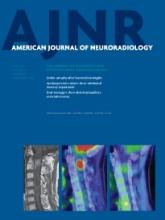We read with interest the letters by Djordje et al and Bavera concerning our article “Mystery of Chronic Cerebrospinal Insufficiency: Identical Venographic and Ultrasound Findings in Patients with MS and Controls.” The correspondents noted the relatively small sample size and the fact the patients with MS did not undergo venography as they did not have 2 abnormal criteria. The venographic findings were also not correlated with sonography. All are true, but the important points of the article are inviolate. The starting point of the chronic cerebrospinal venous insufficiency (CCSVI) entity lies on semiobjective nonvalidated sonographic findings1 obtained by operators who are not blinded to the patient's condition. This is compounded by a significant trend in the methodology in many articles to consider additional subjective findings of the internal jugular vein valvular appearance as being abnormal. We have indeed cited protocol guidelines that are well-accepted.2 The application of these subjective nonvalidated, nonblinded techniques results in a positive result in 1 defined group, and the subsequent venographic findings are confirmatory. We suggest that the difficulty here is that most humans will demonstrate the venographic findings considered abnormal in CCSVI papers. Any prevenographic screening test that defines a group, be it sonography by specially trained individuals (that cannot be replicated by others3,4), blood tests (in our cases, the prevenogram patients having a high parathyroid hormone or adrenocorticotropic hormone), or perhaps a genetic “profile”, will inevitably result in these “positive” venogram findings. The validity and accuracy of the screening test and the venographic appearance are, in our opinion, unrelated.
The venous system is not analogous to the arterial tree, with marked differences in the number of collaterals, function and drainage in the erect and supine position, the presence of valves, capacitance, and the role of the thoracic cage volume changes. Moreover, the neuroscience community has extensive experience in studying diseases in which there are definite acquired venous stenoses combined with intracranial arterial hypervolemia/hypertension (cerebral dural arteriovenous fistula and arteriovenous malformations), with these cases never having images compatible with cerebral demyelination on cranial MR imaging.
The calling for randomized trials is well in advance of reality. The role of a randomized trial is to compare therapies with scientific bases to establish equivalency/superiority or the safety of one therapy over another action (or inaction). CCSVI, as defined, is not a syndrome, disease, or, we would purport, a medical entity. If the proponents of venous angioplasty wish to support the therapy in the treatment of MS, it cannot be on the basis of “angioplastying” venographic findings seen in the healthy population and purporting them to be pathologic in patients with MS. It must be on the basis of unknown, perhaps humorally mediated, sequelae of subjecting internal jugular vein walls to high-pressure balloon angioplasty. A trial of sham angioplasty versus angioplasty (not easy because awake patients can often see the screen and are aware of their surroundings and operator movements) would be one way of assessing placebo-versus-real sustained improvement in a disease process that waxes and wanes in its effects on patients with time as a matter of course. We would submit such a trial is difficult to mount at this time on the basis of the evidence at hand.
- © 2013 by American Journal of Neuroradiology












